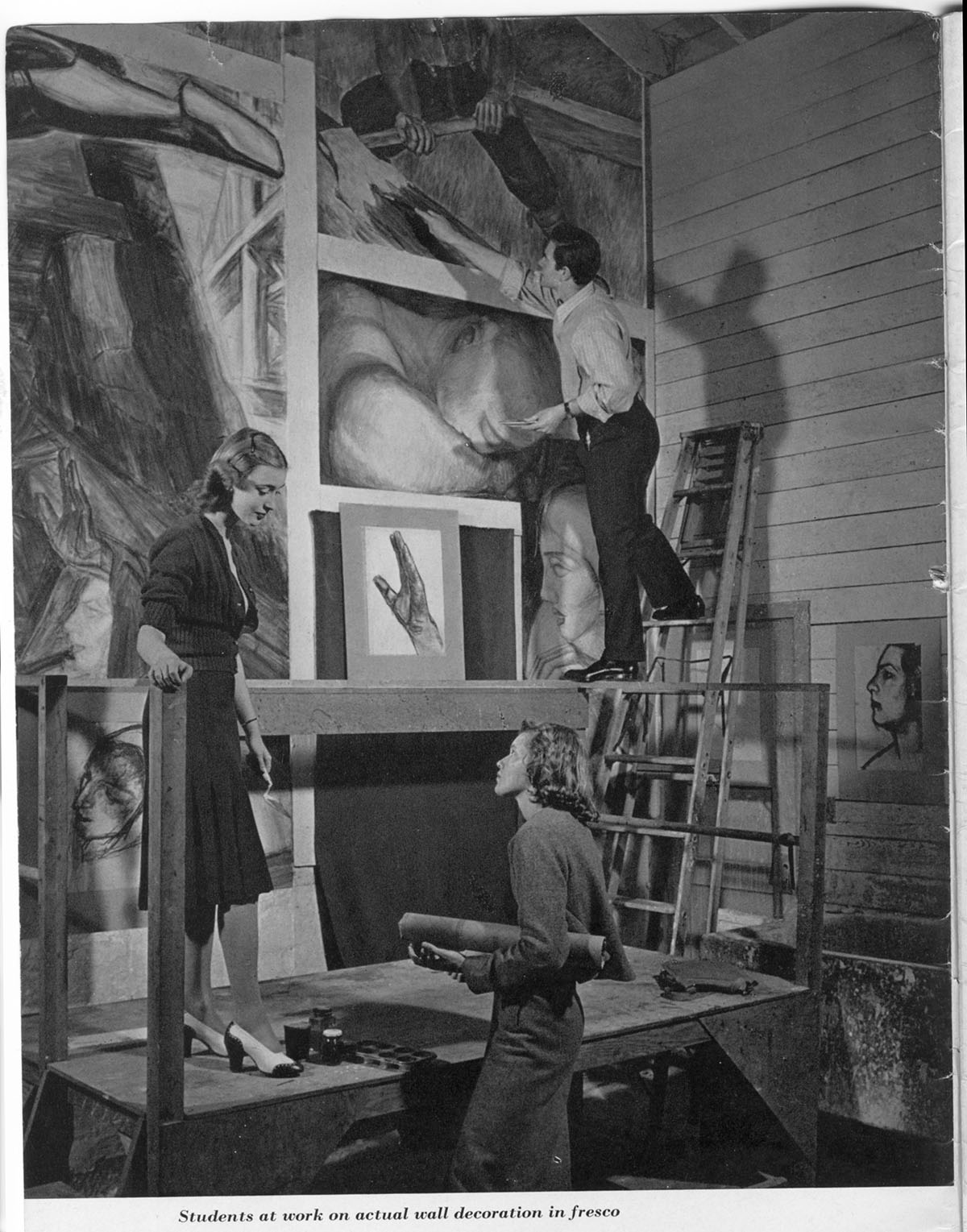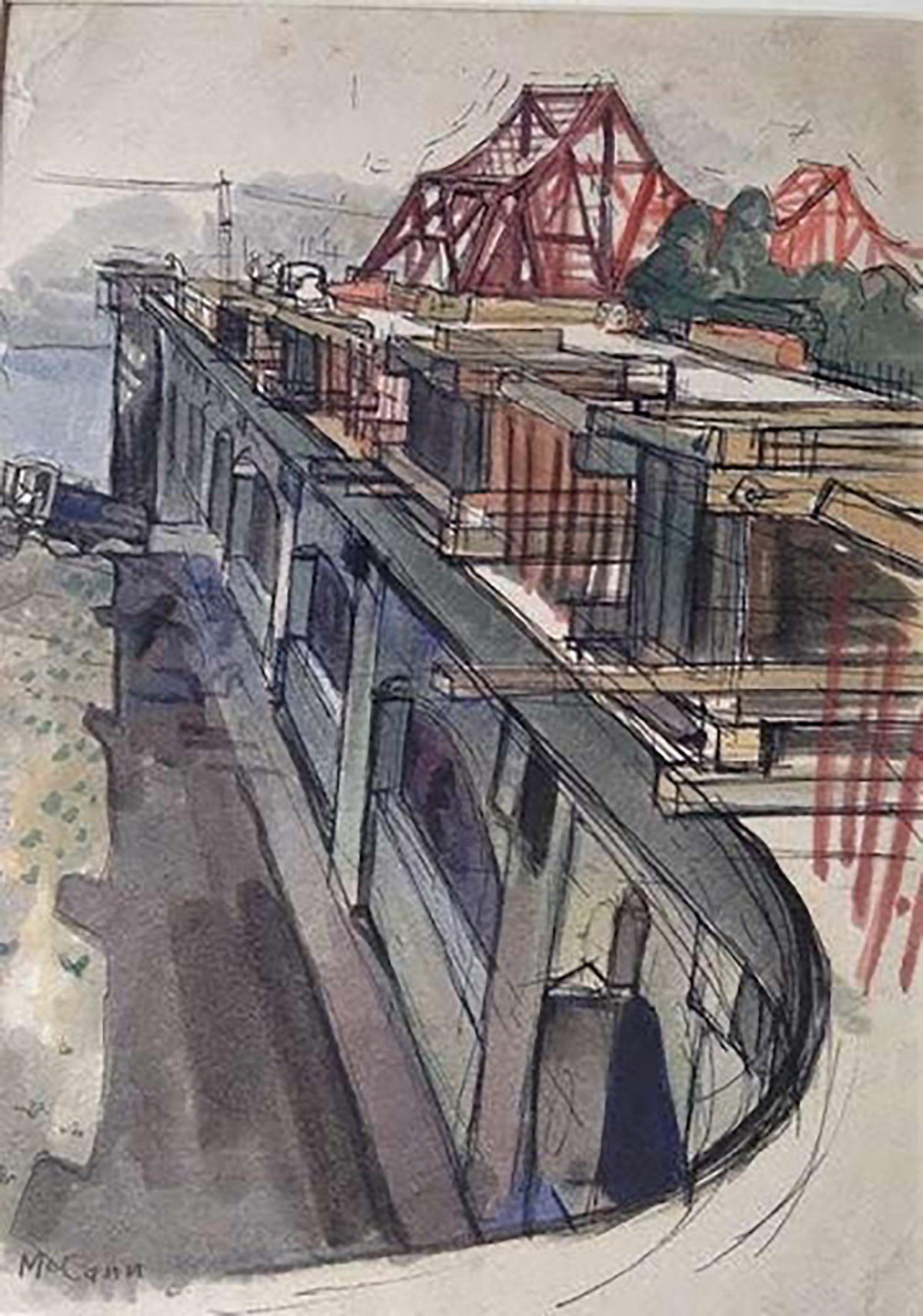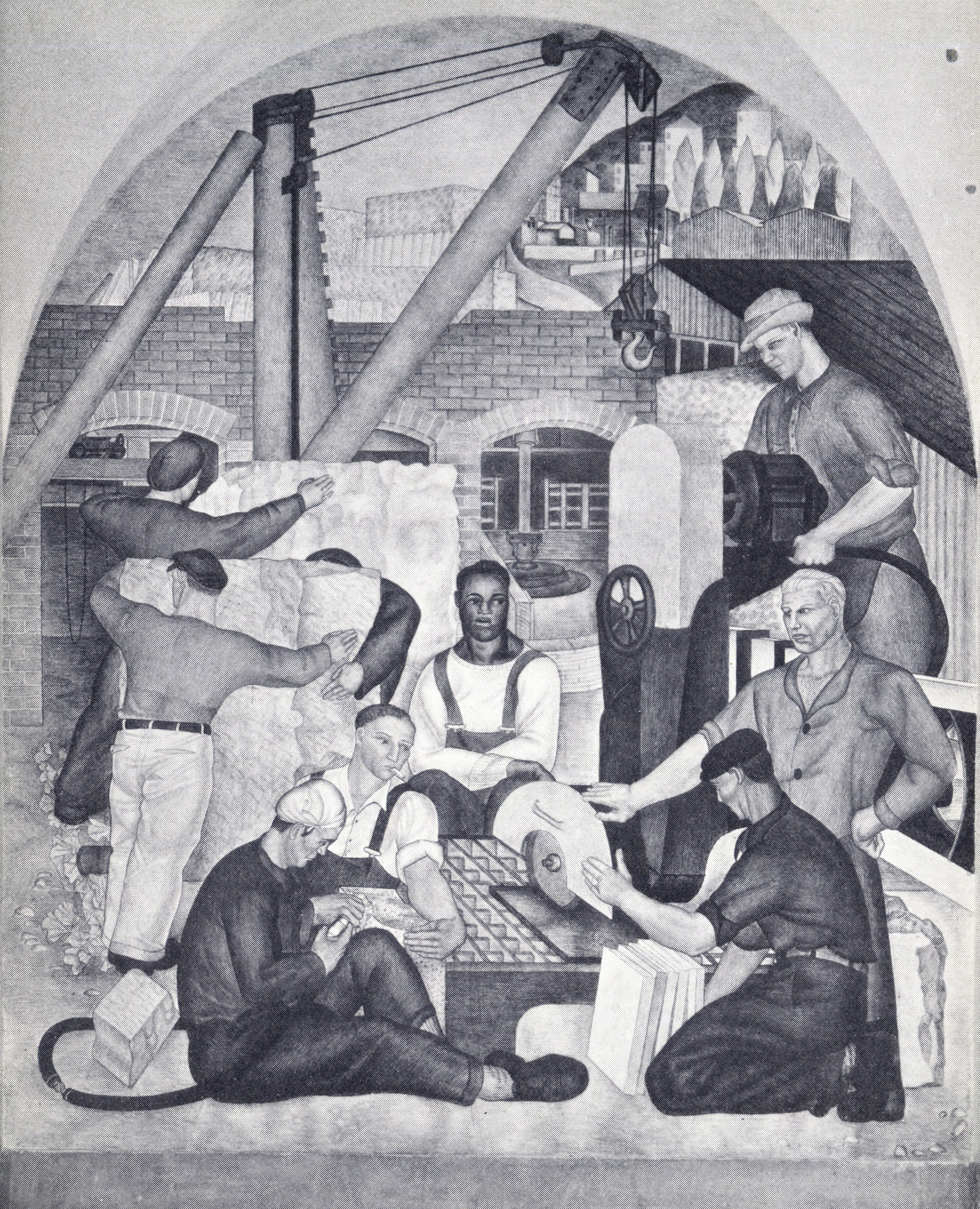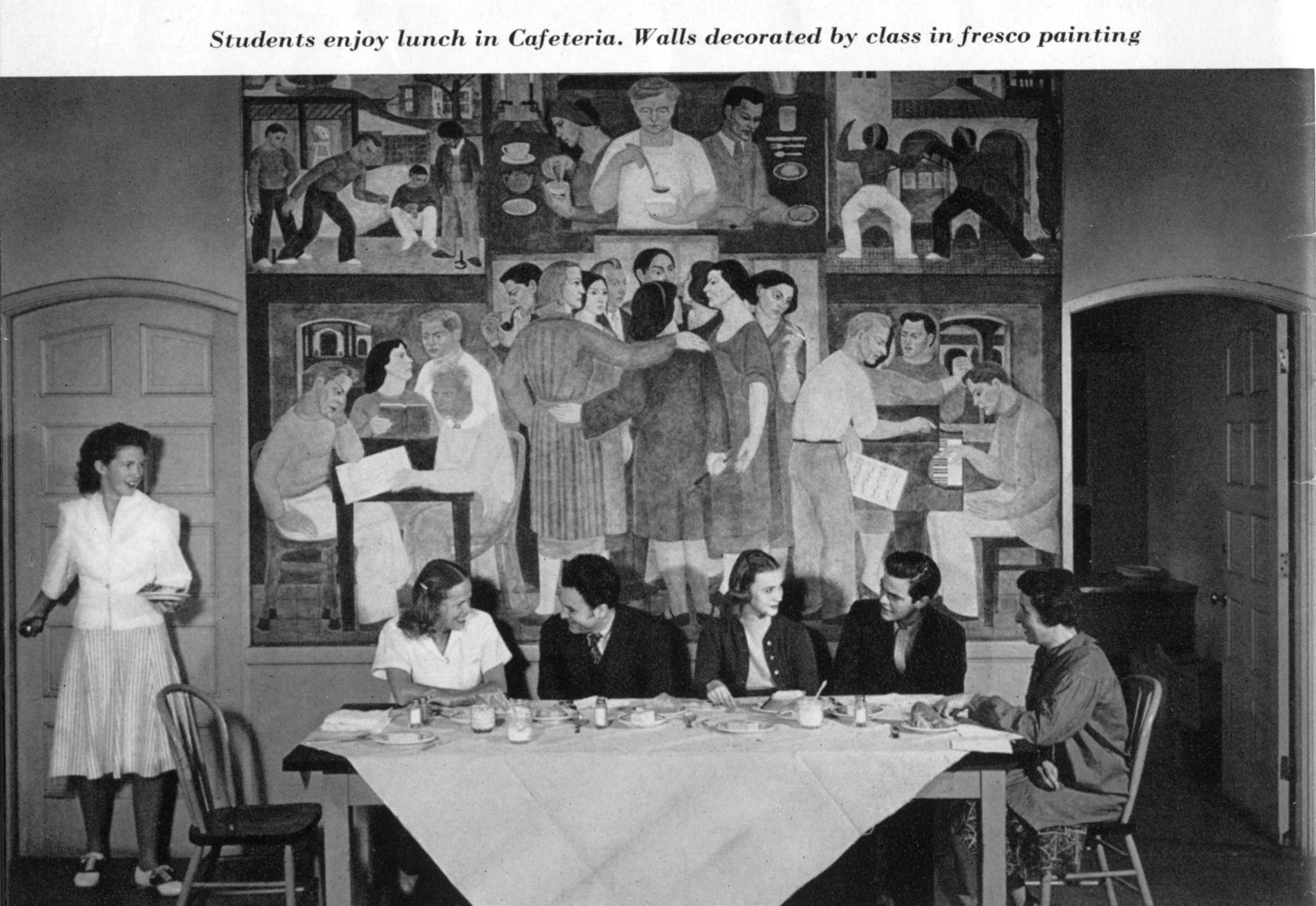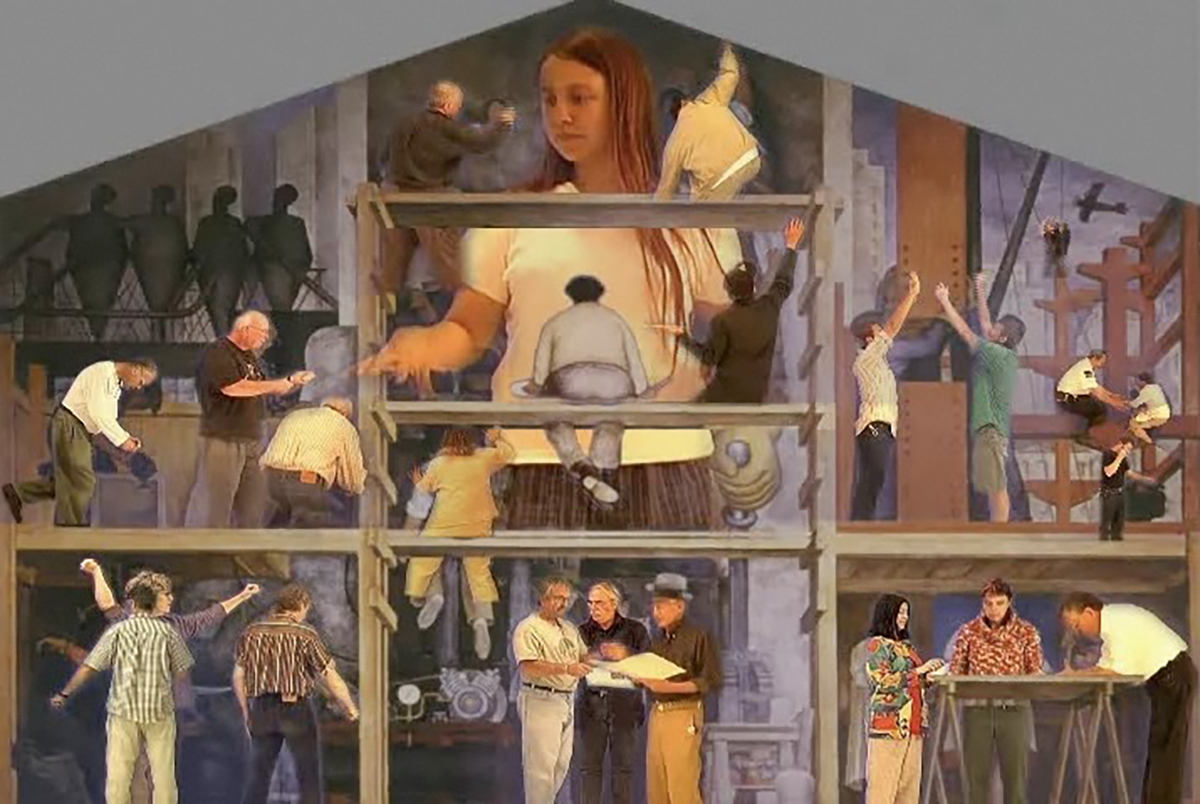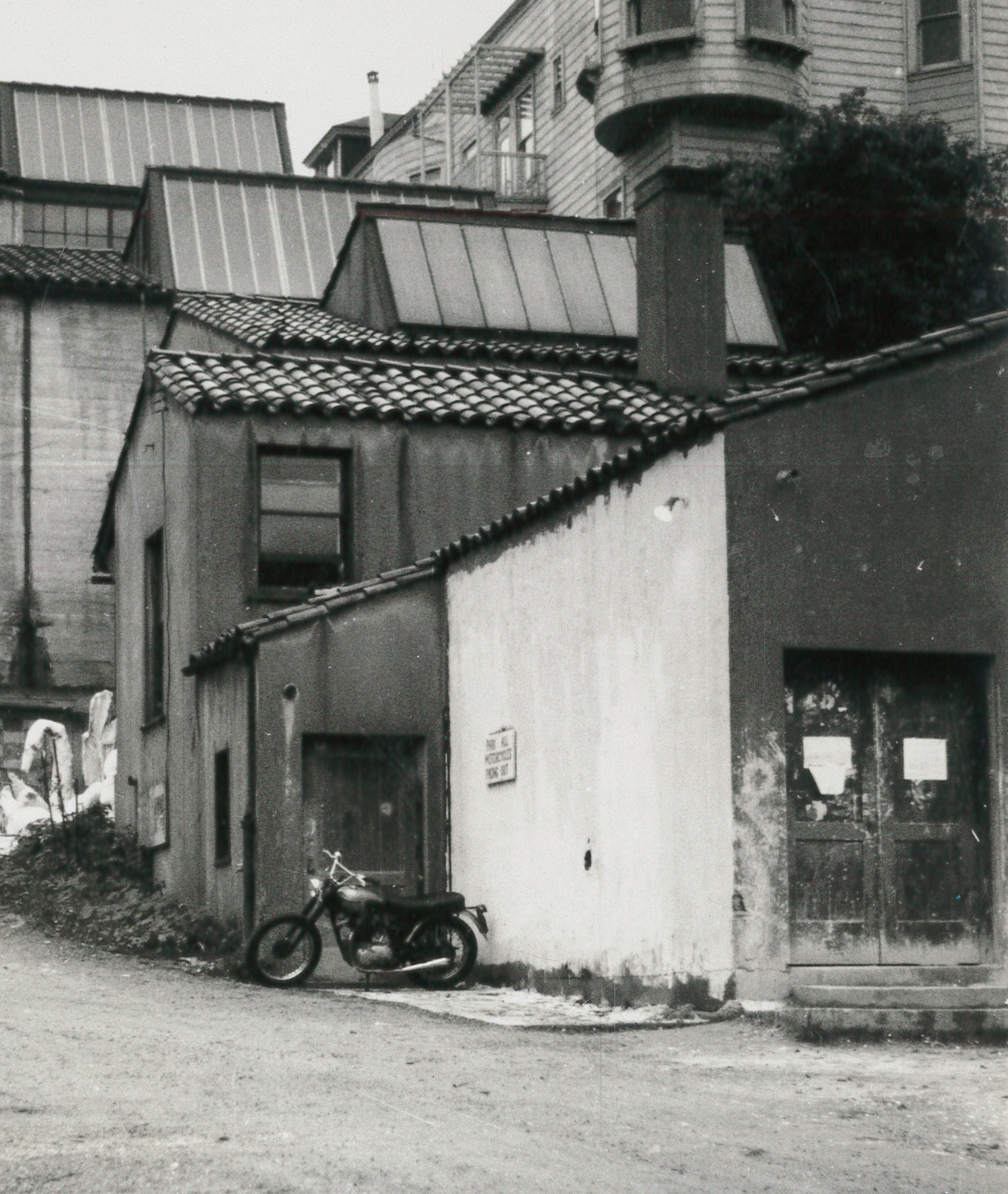
Scaffolding Blueprints
Author
Jeff Gunderson
Decade
1920s 1930s 1940s 1950s 1960s 1970s 1980s 1990s 2000s 2010s
Tags
Architecture Food Murals Painting
Diego Rivera arrived in San Francisco in November 1930 to execute his first murals in the United States. He completed a set of three on this, his first visit: one at the Pacific Stock Exchange, another at the Stern family home in Atherton, and the third at SFAI. The style and progressive politics of Rivera and other Mexican muralists had become influential in the United States, and despite setbacks (anti-Communist sentiment was running high), school leadership was able to procure a visa for Rivera so that he could come to San Francisco and create a large mural on one wall of the school’s gallery.
JG
Slideshow ︎︎︎






